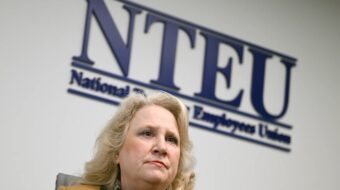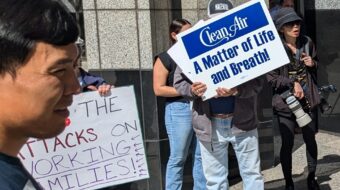The National Hockey League locked out its players on Sept. 15. This is the fourth sports lockout within the last two years. It is the third lockout and fourth labor stoppage for NHL Commissioner Gary Bettman.
The now-expired collective bargaining agreement between the NHL and the players was a result of the entire 2004-2005 season being lost in a lockout. The owners stated that they needed a number of emergency measures to maintain the long-term health of the league. As a result, they gained a host of concessions from the players including a hard salary cap (a maximum amount of money to be spent on salaries), a cap on rookie bonuses and a 24 percent rollback on player salaries. These concessions have created over $1 billion for the NHL since their implementation.
Journalist Armin Rosen of The Atlantic wrote about the current state of the NHL’s fiscal health heading into the new bargaining sessions: “The NHL is in the middle of what should be its golden age. Twenty-one of the league’s teams played their home games at 95% capacity or higher last season; 16 of them sold out every home game. The league just signed the largest national television deal in its history, and last year marked the first time that every game of the two-month-long Stanley Cup playoffs was available to American TV viewers.” Yet, the league continues to claim that the current state of the NHL is imperiled and that the only solution is for the union to make more concessions.
It is true that some franchises are struggling but that is due to poor management by the owners/league. One of the hallmark projects of Commissioner Bettman’s tenure has been the relocation and expansion of NHL franchises to the American South. The strategy has been an abysmal failure, which has created dire financial straits for those franchises while denying opportunities for success in cities with rabid fan bases. The lack of adequate revenue sharing between the successful franchises and the struggling teams has also contributed to smaller markets’ struggles. The NHL’s owners are also seeking to protect themselves from themselves. Since the institution of the salary cap, long-term contracts with the money frontloaded have been a popular way to subvert the intent of the cap. The owners are attempting to limit player contract rights in the new collective bargaining agreement because they want to be protected from their own tendencies in offering contracts.
The league has been more profitable than ever and is currently valued at approximately $3 billion. The limited problems the league has are due to owner mismanagement, a lack of proper revenue sharing and continuing to keep struggling franchises in non-viable markets. Instead of looking at themselves to mitigate these problems, the owners have instead demanded a multitude of concessions from the union.
The NHL has made a series of laughable offers including initial demands for another 24 percent rollback in current player contracts, limiting eligibility for free agency/salary arbitration, not paying out the full amounts due on current player contracts since they would exceed the player share of hockey-related revenue, and requesting the players take a 14 percent revenue concession. These proposals were quickly rejected and the public quickly turned against Commissioner Bettman and the NHL owners, blaming them for the lockout.
To stem the growing tide of public discontent, the NHL developed a relationship with Republican strategist Frank Luntz. Luntz’s branding created the buzzwords of “shared sacrifice” and “50-50 deal.” The success of the propaganda can be seen in the growing numbers of people blaming the union or just telling both sides to get a deal done so hockey can be played. Yet, a simple analysis finds the truth: It is far from “shared sacrifice.” It is an owner-initiated lockout, which they can end at any time. Players have offered to play. The current proposals have shown significant movement on the players’ part to get a deal done while the NHL’s owners continue to demand more. The idea of “50-50” which sounds fair on its face isn’t truly equal since the owners get to take a percentage of money off the top before any revenue splitting occurs.
The current state of affairs is a stalemate. The players association has conceded to a 7 percent decrease in hockey-related revenue but has requested a “make whole” provision where all player contracts would be honored, even if their payouts would exceed the players’ share of 50 percent of revenue. The NHL has steadfastly refused to give anything more than a pittance of what is necessary to properly ensure current contracts are honored.
Despite getting exactly what the the NHL wanted in terms of revenue, the owners are refusing to concede on free agent and salary arbitration contract language. After recent negotiations, NHL Players Association Executive Director Donald Fehr said: “”On the big things there was as of today no reciprocity in any meaningful sense, no movement on the players’ share, no movement on salary-arbitration eligibility, no movement on free agency eligibility, no agreement on a pension plan.”
This current labor fight fits within the framework of union battles throughout the country. A very profitable company demands concessions from its workers to account for the company’s own mismanagement and simply because it thinks it can get them. These attacks need to be seen for what they are, put in the wider understanding of the labor movement, and a vigorous defense of the players/workers must be mounted in our communities.











